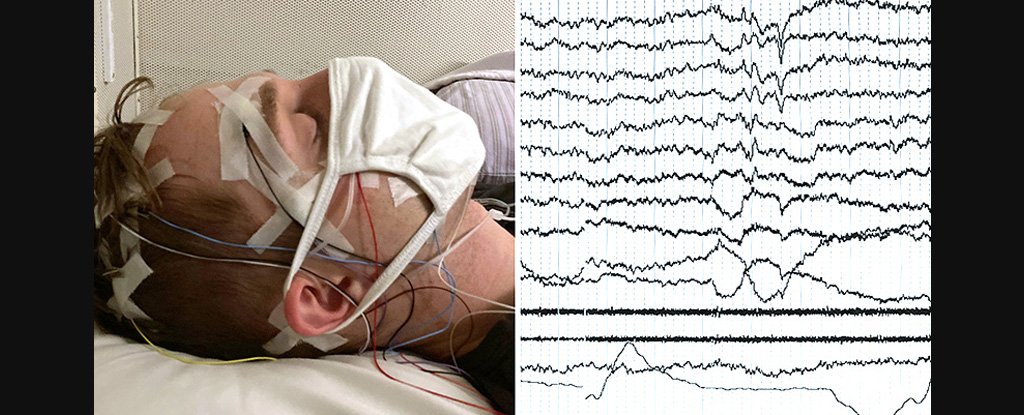Scientists have identified a new phenomenon that they describe as “interactive dreaming”, in which people who experience deep sleep and lucid dreams are able to follow instructions, answer simple yes or no questions and even solve basic math problems.
In addition to adding a new level of understanding to what happens to our brains when we are dreaming, the new study could eventually teach us how to train our dreams – to help us towards a specific goal, for example, or to address a particular health problem. mental health.
There are many things about sleep psychology that remain a mystery, including the rapid eye movement (REM) stage, where dreams often occur. Being able to get responses from sleeping people in real time, instead of relying on later reports, can be extremely useful.
“We found that individuals in REM sleep can interact with an experimenter and communicate in real time,” says Northwestern University psychologist Ken Paller. “We also show that dreamers are able to understand questions, engage in working memory operations and produce answers.
“Most people can predict that this would not be possible – that people would wake up when asked or would not answer and would certainly not understand a question without misinterpreting it.”
The researchers worked with 36 subjects in experiments in four different laboratories. One volunteer had narcolepsy and frequently experienced lucid dreams, while the others varied in terms of their experiences with lucid dreams.
During the deepest stages of sleep, monitored by electroencephalogram (EEG) instruments, scientists interacted with study participants via spoken audio, flashing lights and physical touch: people who slept were asked to answer simple math questions , counting flashes of light or physical touches and to answer basic questions yes or no (like “do you speak spanish?”).
The responses were given through eye movements or facial muscles previously agreed. In 57 sleep sessions, at least one correct answer to a question was observed in 47 percent of the sessions in which the lucid dream was confirmed by the participant.
The confirmation of the lucid dream states was done blindly, with the dormant responses needing to be agreed upon by several witnesses.
 A summary of the experiments. (Konkoly et al., Current Biology 2021)
A summary of the experiments. (Konkoly et al., Current Biology 2021)
“We put the results together because we feel that the combination of results from four different laboratories using different approaches more convincingly testifies to the reality of this two-way communication phenomenon,” says Northwestern University neuroscientist Karen Konkoly.
“In this way, we see that different means can be used to communicate”.
The subjects involved in the study were usually awakened after a successful response to report their dreams. In some cases, the external entries were remembered as external or superimposed on the dream; in others, they came through something within the dream (like a radio).
In the published study, the researchers compared the attempt to communicate with lucid dreamers with the attempt to contact an astronaut in space, and it is the immediacy of the responses that makes this new approach so exciting.
The research can be useful in the future study of dreams, memory and the importance of sleep in fixing memories. It can also be useful in treating sleep disorders and, later on, it can even give us a way to train what we see in our dreams.
“These repeated observations of interactive dreams, documented by four groups of independent laboratories, demonstrate that the phenomenological and cognitive characteristics of dreams can be interrogated in real time,” write the researchers in their article.
“This relatively untapped communication channel can allow for a variety of practical applications and a new strategy for empirical exploration of dreams.”
The research was published in Current Biology.
